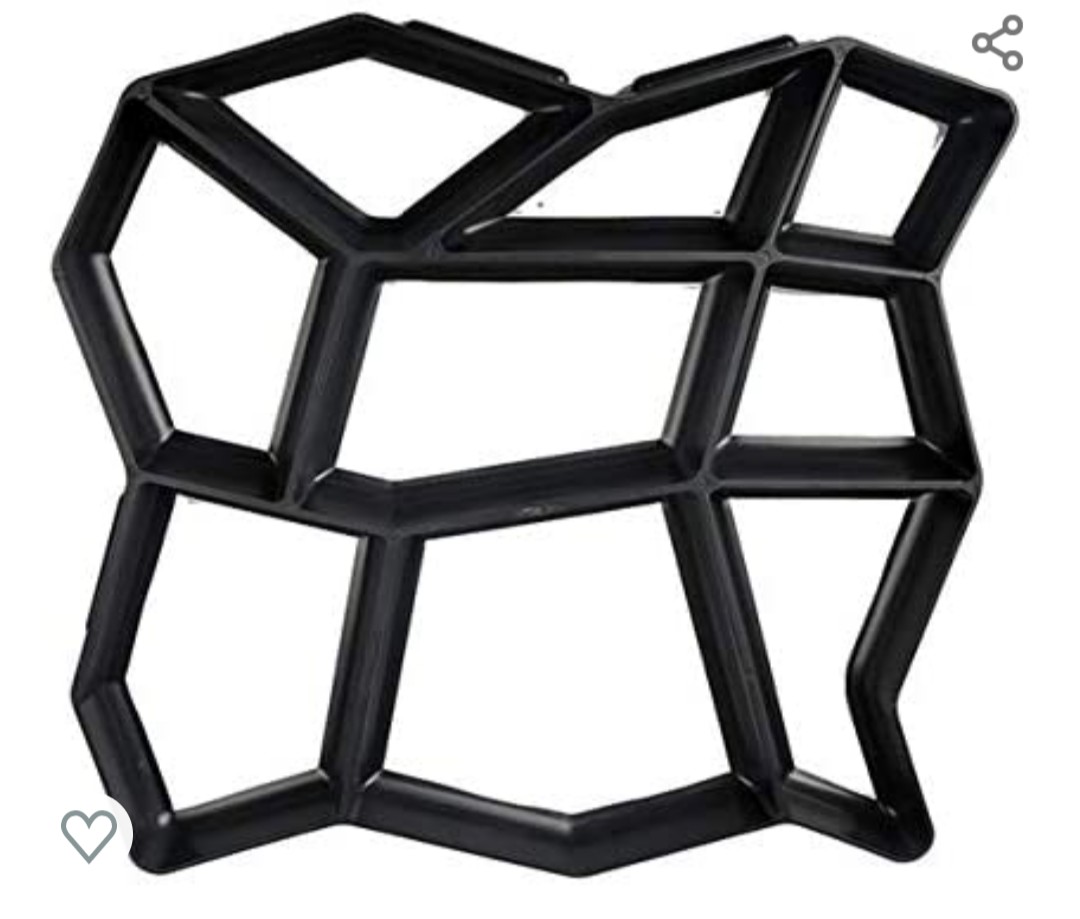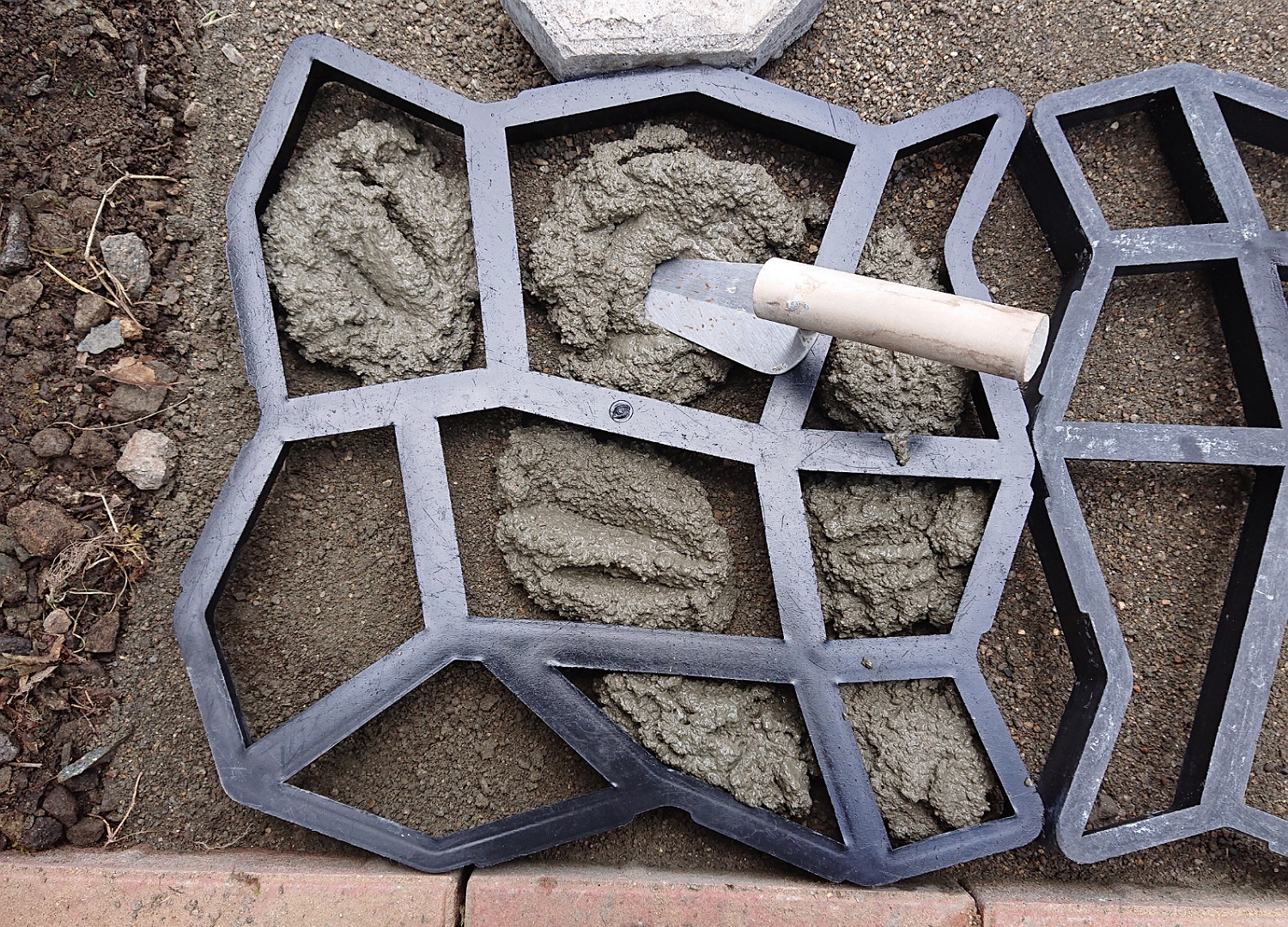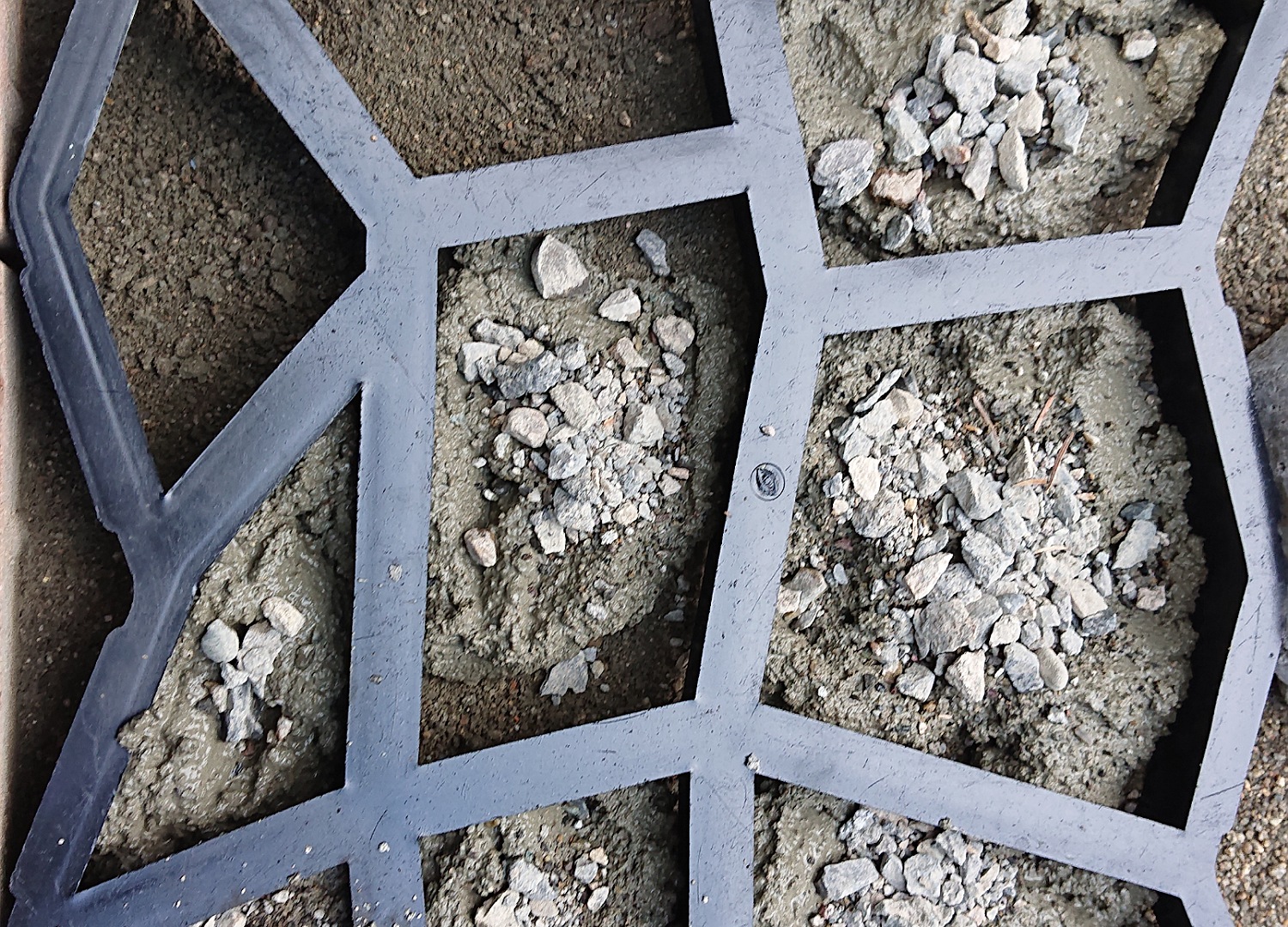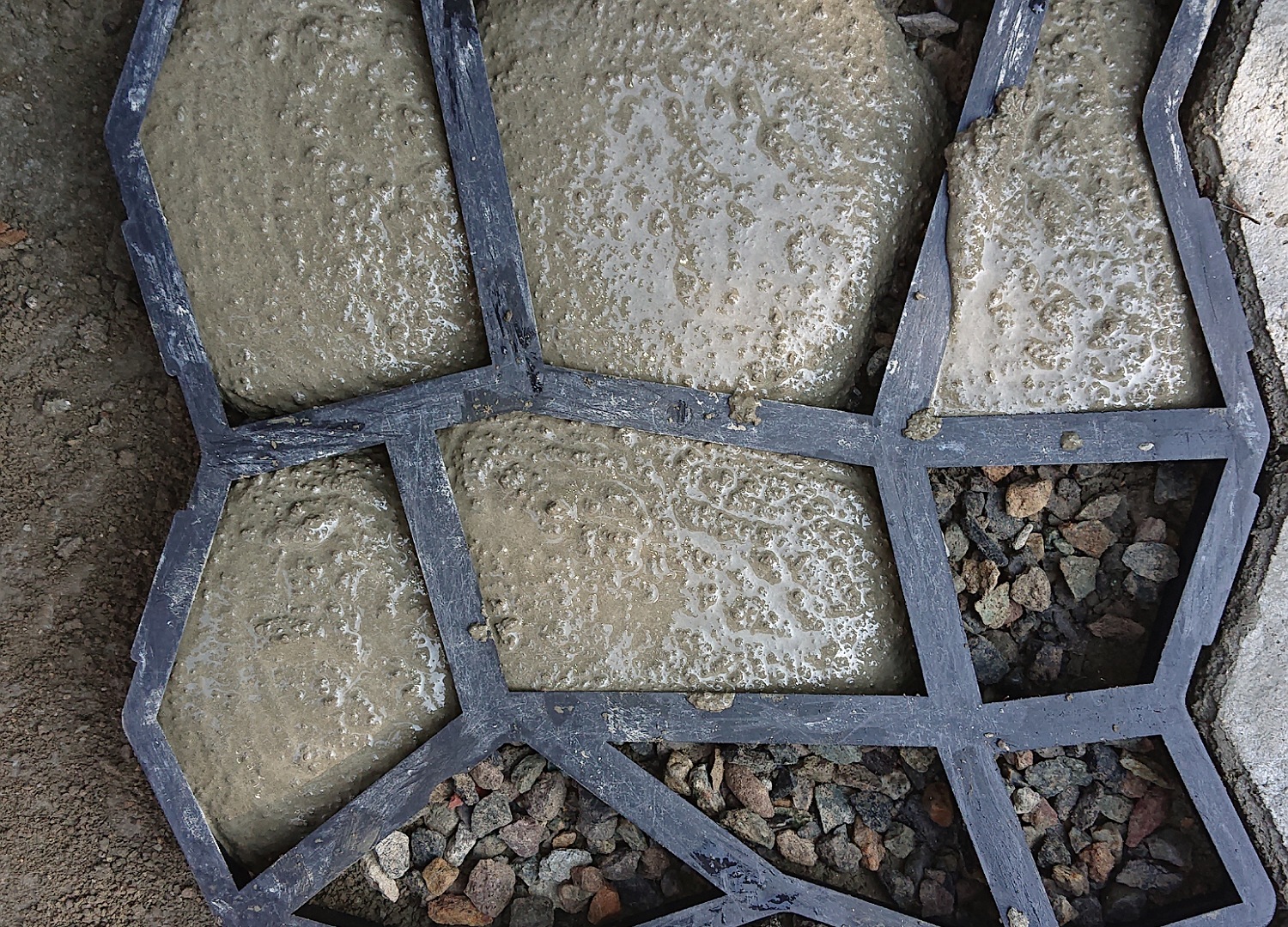Approach DIY construction in front of the entrance is finally in the main work.
After thinking about what kind of design to make, I decided to use a “concrete formwork” that even an amateur can look good in its own way.
For the “concrete formwork” prepared this time, I chose one with an irregular pattern design as shown in the photo below.
There are various shapes and sizes when searching on the net, and since this is the first time for me, I decided to make it 35 cm ✕ 35 cm thick 3.6 cm and it is about 900 yen. Made of plastic, it is lightweight and can be used for repetitive tasks. For the time being, I bought one at amazon. (It will take about 2 weeks to arrive directly from China. I will purchase another one at a later date from a store with domestic stock for 1650 yen. It arrived the next day at amazon.)

The “concrete formwork” is placed on the underlying concrete, and instant cement is newly added to the formwork and kneaded into it.
Since the concrete underlay was laid out by eye measurement, when installing the formwork, fine-tune it with a level to be aware of the horizontal and vertical inclination.

Since a large amount of instant cement is required, I added a little gravel inside to save money and increase strength.

Instant cement can adjust the hardness of the first concrete by the amount of water.
At first, I didn’t know the time to remove the formwork (hardening time of cement), so I tried to “pour” the cement into the formwork with a lot of water. The curing time was 24 hours, and I started with a long waiting time of removing the mold the day after pouring.

When I looked up various youtub videos, it was surprisingly quick to remove the formwork, and there was online information that 15 minutes was enough. After all, you have to check the temperature and weather at that time, the viscosity of instant cement, etc. by yourself.
Since it was left for a long time, it did not come off the formwork, and it was forcibly removed with a tongue and collapsed twice. The cement was too soft and lost its shape when the formwork was removed. It was a process of trial and error over and over again.
Finally, on a sunny or cloudy day in November on the Nasu Plateau, on a hot day (up to 10 degrees Celsius), the viscosity of the cement feels like a firm Macshake (specifically, 1/3 of the cement in a bucket). I found that the best time to leave it for about 4 hours was to add a certain amount of water and stir while adding water, and remember the hardness by hand.
If you use the plastic formwork many times, the cement will stick to it, and the cement will break when you remove the mold. As a solution, if you apply oil to the formwork every time and then use it, it will become plastic. We also investigated and discovered that cement “does not stick”.
It was a task to gradually acquire this know-how while making many mistakes.
Dai